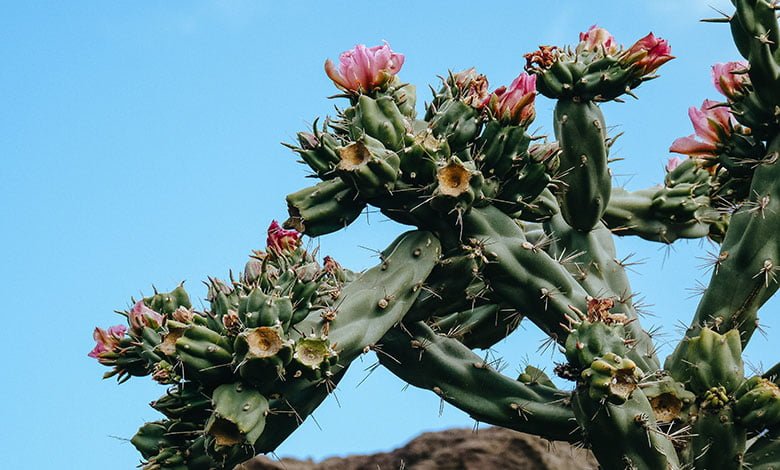What are perennial plants?
What are perennial plants?
Perennial Plants are plants that live for more than two years, the majority of which grow and bloom during spring and summer, and then die during autumn and winter, to grow back from their roots the following year, as perennial plants are a type of trees that are classified based on their stages of growth, and this does not apply to all types of perennial plants, as some adopt to survive during autumn and winter without dying, and without having to grow again from roots
This is unlike annual plants that complete their life cycle during one season, perennial plants are expected to live several seasons to bear fruit each year, due to the fact that they remain dormant for extended periods of time before blooming again, and perennial plants are characterized by their resilience under difficult conditions, but not all of them, some of which die at freezing degrees or during extremely dry conditions, or during special growth conditions.
Under these conditions, plants are usually unable to germinate from the seed and reproduce within one year, so perennials have evolved to increase the chances of reproduction and survival, living for years and blooming during the spring, and perennial crops are usually harvested in difficult climatic conditions, short seasons or dry weather, and perennial plants are used in the coal industry.
As perennial plants can survive for several years, a large proportion of their growth has been allocated to the vegetable plant, which enables them to access limited resources and live longer. They often have intensive and deep roots to access water and nutrients, or long and powerful stems for as much sunlight as possible, and perennial plants are characterized by reservoirs for redevelopment during difficult conditions, such as: Drought, frozen winters, and harmful activities such as grazing, like carbohydrates, fats and proteins are stored in their stems and roots.
Types of perennial plants
Perennial plants are classified into annuals, biennials, and perennials, biennials live for two years, annuals live for one year, perennials exceed 3 years or more, which are characterized by the fact that they have evolved in environments with limited resources due to the presence of other plants around them, as well as strong competition, and their growth rates are lower than annuals.
Different varieties of perennial plants are available, a convenient option to equip a garden full of bright colors and scents adding a variety of colors between April to November, usually attracting bees and butterflies when they bloom, many of which are used for ornamental purposes, and what is under the category of perennial plants names is characterized by the fact that they are easy to germinate and versatile, either as an addition between shrubs, cover under trees, in pots, or cultivated separately to draw the boundaries of a garden, which is an easy alternative to annuals, and the following is a mention of perennial plant species:
For more information about How do I take care of a shade plant? can read the article How do I take care of a shade plant?
Perennial flowers
Perennial flowers bloom annually new buds, with refreshed colors and fragrant scents, and require little care, making them an ideal choice for those who want to add lasting beauty to their garden, courtyard, or the like, and the characteristics of perennial flowers vary from one type to another, some of which bloom for a few years before dying completely, some bloom one day each year, but collectively represent a beautiful botanical cover, and some of the most prominent examples of which are:
- Black-eyed Susan flower.
- Salvia.
- Coreopsis lanceolata.
- Sedum.
Perennial herbs
Perennial herbs are one of the most popular herbs for gardeners because they live for years, get into many meals, and can be frozen, or dried for winter use, as they are then either dead, or covered in snow, to wait for spring to grow again, and can be grown in containers, but they always prefer the firm ground. Notable examples include the following:
- Mint, Rosemary, and Sage.
- Thyme, Garlic, and Marjoram.
- Acacia tortilis is spread in the UAE.
- Artemisia dracunculus.
Perennial fruits and vegetables
Perennial fruits and vegetables require the same care as perennial herbs and flowers, need not be grown annually or ploughed, thrive and produce a crop rich in beneficial nutrients throughout the season, resistant to various difficult conditions if they have a suitable location and climate, usually also resistant to pesticides, diseases, drought and weeds, the most prominent example of which is:
- Asparagus.
- Horseradish.
- Watercress.
- Cabbage.
Features of perennial plants
Here are the features of perennial plants:
- They don’t need much care, there’s no need to plow or grow it every year like in annuals.
- It has a larger crop, providing multiple crops at different times of the year.
- Versatility, used either for aesthetic purposes, to protect against soil erosion, food, or as a vegetation cover.
- It helps to build soil, which is a great benefit to soil and provides a healthy environment for a large number of organisms, such as mushrooms and others needed to sustain the soil.
Summary
Summary of the above, perennial plants can be briefly considered a species of plants that live for two years or more, and perennial plants are characterized by their ability to withstand difficult conditions, such as drought, frozen winter, or harmful activities such as grazing, as stored in their stems and roots carbohydrates, fats, proteins, and also evolved to increase the chances of reproduction and survival and became living for years and blooms during spring, and perennial crops are usually harvested in difficult climatic conditions or during short seasons or dry weather.


